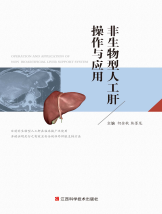
并列正书名: OPERATION AND APPLICATION OF NON BIOARTIFICIAL LIVER SUPPORT SYSTEM
主要责任者: 何金秋,熊墨龙
责任方式: 主编
出版者: 江西科学技术出版社
出版地: 南昌
字数: 280 千字
页码: 1-313
开本: 16
中图分类号: R318.14
语种:中
定价:68.00
出版时间:2017-11
丛书多卷书否:否
书目简介:本册工具书共收录147条词条。
被引频次:1
| 词条 | 非生物型人工肝操作与应用 |
| 类别 | 中文百科知识 |
| 释义 |  并列正书名: OPERATION AND APPLICATION OF NON BIOARTIFICIAL LIVER SUPPORT SYSTEM 主要责任者: 何金秋,熊墨龙 责任方式: 主编 出版者: 江西科学技术出版社 出版地: 南昌 字数: 280 千字 页码: 1-313 开本: 16 中图分类号: R318.14 语种:中 定价:68.00 出版时间:2017-11 丛书多卷书否:否 书目简介:本册工具书共收录147条词条。 被引频次:1 |
| 随便看 |
开放百科全书收录579518条英语、德语、日语等多语种百科知识,基本涵盖了大多数领域的百科知识,是一部内容自由、开放的电子版国际百科全书。